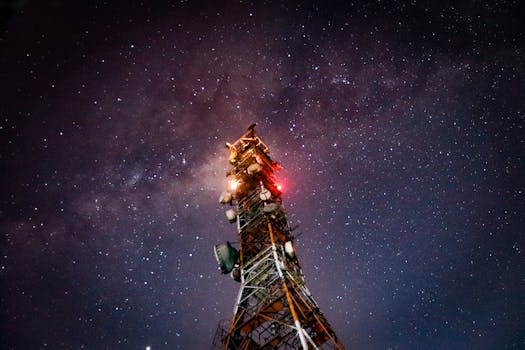
MEO Satellites: Revolutionizing Global Communications with Medium Earth Orbit Technology
MEO satellites, or Medium Earth Orbit satellites, are a type of satellite that operates at an altitude of around 2,000 to 36,000 kilometers above the Earth’s surface. This orbit is higher than Low Earth Orbit (LEO) satellites but lower than Geostationary Orbit (GEO) satellites. MEO satellites are designed to provide global coverage and are used for a variety of applications, including navigation, communication, and Earth observation.
The use of MEO satellites has become increasingly popular in recent years due to their ability to offer faster and more reliable connections compared to traditional GEO satellites. MEO satellites have a lower latency than GEO satellites, which makes them ideal for applications that require real-time communication, such as video conferencing and online gaming. Additionally, MEO satellites have a wider coverage area than LEO satellites, making them a more cost-effective option for providing global connectivity.
How MEO Satellites Work
MEO satellites work by transmitting and receiving signals to and from Earth-based stations. The signals are transmitted to the satellite through an antenna, and then the satellite amplifies and re-transmits the signal back to Earth. The signal is then received by an antenna and decoded, allowing the information to be accessed by the user. MEO satellites use a variety of frequencies, including C-band, Ku-band, and Ka-band, to transmit and receive signals.
MEO satellites are typically launched into orbit using a rocket, and once in orbit, they use their own propulsion system to maintain their position and altitude. The satellites are designed to operate for a minimum of 10 to 15 years, although some satellites have been known to operate for up to 20 years or more.
Applications of MEO Satellites
MEO satellites have a wide range of applications, including navigation, communication, and Earth observation. One of the most well-known applications of MEO satellites is the Global Positioning System (GPS), which uses a constellation of MEO satellites to provide location information to GPS receivers on the ground. Other applications include satellite communications, such as satellite phone and internet services, and Earth observation, such as weather forecasting and remote sensing.
MEO satellites are also used for a variety of scientific applications, including astronomy and space weather monitoring. For example, the European Space Agency’s (ESA) Gaia mission uses a MEO satellite to create a highly accurate 3D map of the Milky Way galaxy. Additionally, MEO satellites are used for commercial applications, such as providing broadband internet services to remote and underserved areas.
Benefits and Challenges of MEO Satellites
MEO satellites offer a number of benefits, including faster and more reliable connections, wider coverage areas, and lower latency compared to traditional GEO satellites. However, MEO satellites also face a number of challenges, including interference from other satellites and Earth-based stations, orbital congestion, and the need for more complex and expensive ground equipment.
Despite these challenges, the use of MEO satellites is expected to continue to grow in the coming years, driven by the increasing demand for faster and more reliable global connectivity. The development of new technologies, such as advanced propulsion systems and more efficient antennas, is also expected to improve the performance and cost-effectiveness of MEO satellites.

